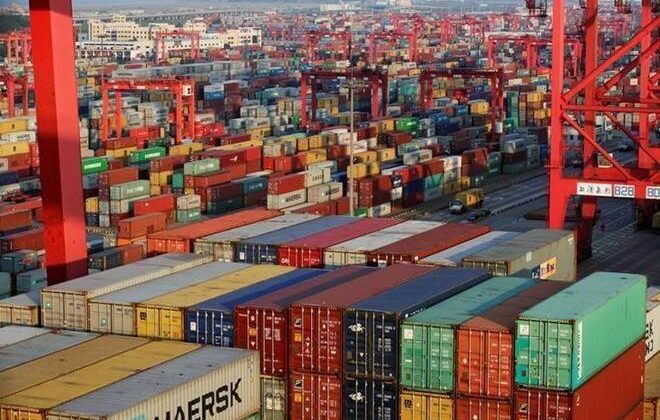
Centre unveils strategy to boost exports
As India aims to boost its exports, the government is looking at manufacturing containers in a big way while developing a shipping line under the Atmanirbhar Bharat programme. Containers are required to ship goods. At present, India is solely dependent on the public sector Shipping Corporation of India.
While the Ministry of Ports, Shipping and Waterways has already set up a committee to study the feasibility of manufacturing containers at Bhavnagar in Gujarat, sources said that other such hubs are also being looked at.
Until now, most exporters have been relying primarily on Chinese containers.
But with geopolitical contours changing rapidly, shortage of containers has hit exporters, who have had bear the additional burden of freight cost hike. India has reduced its imports from China amid rising political tension.
“We need to address the issue of containers at the earliest especially as we focus on boosting exports on one hand and reducing imports on the other,” Ajay Sahai, director general, Federation of Indian Export Organisation told India Narrative.
Traffic at India’s major ports touched 704.82 million tonnes in 2019-20, a report by India Brand Equity Foundation (IBEF) said.
Amid the Coronavirus pandemic, India has turned into a major supplier of rice grain, meat and other agriculture produce globally. Shortage of containers, especially in the post Covid 19 era, has been causing delays in shipment of various goods.
“The issue of non-availability of containers has been brought to the notice of the government. As exports of rice has surged, the shortage of containers has proved to be a bid handicap. Going ahead, we expect global demand for rice from India to remain high and in order increase supply, it is critical to resolve this issue,” Vinod Kaul, executive director, All India Rice Exporters’ Association said.
In 2020, India’s farm exports rose by about 10 per cent.
The IBEF report highlighted that Indian agricultural, horticultural and processed foods are currently exported to more than 100 countries, chief among them being the Middle East, Southeast Asia, SAARC countries, the EU, and the US.
India, which already supplies over 32 per cent of the global rice needs, witnessed an 80.4 per cent increase in exports of rice both basmati and non basmati during the April-December period of the current financial year touching 11.58 million tonnes. Exports of non Basmati rice alone accounted for an increase of 129 per cent.
Besides, India has been exporting meat, sugar, dairy products, honey, pulses.
Source: Nagaland Post
